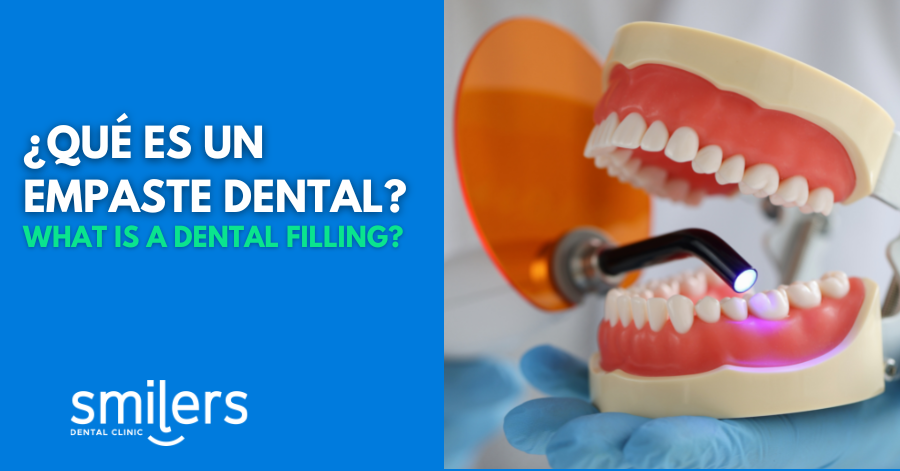There are many doubts that patients have about the dental bridge. What is it? In what cases is it recommended? What is the process like? We can define it as a variety of fixed prosthesis whose purpose is to replace missing teeth.

Before we begin, here are some important points:
- Materials: Usually made of ceramic or zirconium.
- Requirements: Need adjacent teeth in good condition for support.
- Purpose: To replace missing teeth.
- Recommended cases: To replace teeth that have fallen out or are damaged.
- Advantages: Restores esthetics and oral functionality.
- Functionality: Helps in actions such as chewing and speaking.
- Problems avoided: wear of adjacent teeth, mandibular tensions.
They usually have a somewhat restrictive cost if you have a tight budget, in short it is usually an expensive and restrictive treatment. But definitely one of the best options to recover the aesthetics and functionality of your smile.
Requirements
The purpose of the dental bridge is to replace lost teeth.
Unlike other methods dedicated to dental restoration, such as removable or fixed prostheses, in order to be placed it is necessary for the patient to comply with a series of requirements.
The most important is that you will need to have a piece in good condition to hold the crowns that will be attached to both sides.
You should know that there is also the possibility of requiring the insertion of an implant as a process prior to the placement of a bridge, which can greatly increase the final cost.
In any case, it is preferable for a specialist to examine the patient’s situation and, based on this, make the decision that best suits the patient’s needs.
Advantages of the dental bridge
First of all, we would like to emphasize that this is one of the most effective alternatives when it comes to restoring the esthetics of a patient’s smile, in addition to the following advantages:
- Restoration of Masticatory Function: By replacing missing teeth, dental bridges allow for more efficient and natural chewing.
- Improved Dental Aesthetics: They offer an esthetic solution to the empty spaces in the mouth, which can improve the patient’s smile and self-esteem.
- Facial Support: Missing teeth can cause sagging of the facial structure. Helps maintain the shape of the face by providing the necessary support.
- Phonetic Correction: Teeth play an essential role in articulation and phonation. Bridges help improve the pronunciation of words that may have been affected by missing teeth.
- Redistribution of Occlusal Forces: They evenly distribute the forces in your bite, which is beneficial to the overall dental mechanics.
- Prevent Dental Migration: When a tooth is missing, adjacent teeth tend to move into the empty space. Prevent this unwanted movement.
- Improved Occlusion: By replacing missing teeth, bridges help maintain proper occlusion (the correct fit between the upper and lower teeth).
- Biocompatible Material: Generally, they are made of ceramic or zirconium, which are biocompatible materials, minimizing allergic reactions or rejection of the material.
- Ease of cleaning: Unlike removable dentures, they are easier to clean and maintain, which promotes better oral hygiene.
- Durability: With proper care they can last for many years, making them a long-term investment in dental health.
Disadvantages?
If you require it, the only detail that you may not like is the price. And the cost of the dental bridge is higher compared to removable prostheses, although it is true that it is a cheaper option than the placement of dental implants, in many cases it can be restrictive.
Types of Dental Bridges: Options and Considerations
In the world of dentistry, the options are varied, allowing each patient to find the solution that best suits his or her needs and budget.
Traditional Dental Bridge
The traditional dental bridge is perhaps the best known and most widely used. It is a reliable solution to replace one or more missing teeth.
- Components: It is composed of one or more arches of prosthetic teeth, which are held in place by dental crowns, also known as abutments.
- Requirements: It is necessary to have natural teeth in good condition on both sides of the empty space to anchor the crowns.
- Pros and Cons: This type of bridge is sturdy, but requires filing of adjacent natural teeth to accommodate the crowns.
Cantilever Dental Bridge
The cantilever dental bridge is similar to the traditional one, but has the peculiarity of requiring only one adjacent tooth for its anchorage. This makes it ideal for certain specific situations.
- Components: Like the traditional bridge, but the arch is supported by an abutment on one side.
- Requirements: Useful if there is only one natural tooth next to the empty space.
- Pros and Cons: Offers a less invasive alternative to the traditional bridge, but may be less stable due to one-sided support.
Differences between a dental implant and a dental bridge
Maryland Bridge
The Maryland bridge is a more conservative option that preserves more of the original tooth structure. It is an excellent option if you want to avoid filing down your adjacent teeth.
- Components: Incorporates a prosthetic tooth supported by a metal or porcelain framework.
- Requirements: It is not necessary to file adjacent teeth.
- Pros and Cons: It is less invasive but can cause gum discomfort and is not suitable for teeth that must withstand a lot of force, such as molars.
Bridges over Dental Implants
Bridges on dental implants are a modern option that provides a long-term solution for multiple tooth loss.
Components: Attaches directly to one or more dental implants, rather than to adjacent teeth.
Requirements: Suitable for multiple tooth loss.
Pros and Cons: It offers excellent esthetic and functional results, but it is a more complex and generally more expensive process than other types of bridges.
This is the most expensive of the available options.
Always remember to consult with your dentist to determine which type is right for you, taking into account both your medical needs and your budget.
How a Dental Bridge is Placed: A Step-by-Step Walkthrough
Understanding how it is placed is essential for anyone considering this treatment. Although the procedure varies depending on the type and individual conditions of the patient, here is a detailed and generalized description of the common steps in the process.
Initial Consultation and Case Study
- First Dental Appointment: During this consultation, the dentist will evaluate your case to determine if it is the right solution for you. A complete dental examination will be performed and, in some cases, x-rays will be taken.
Preparation of Adjacent Teeth
- Second Appointment and Tooth Grinding: At your second visit, the dentist will prepare the teeth that will support the bridge. This step involves grinding (filing) the adjacent teeth to create space for the crowns that will support the bridge. Note: If you opt for a Maryland bridge, this step will not be necessary.
- Placement of the Temporary Prosthesis: After grinding, the dentist will place a temporary bridge to protect the exposed teeth and gums, as well as to fulfill an esthetic and functional function during the time it takes to fabricate the definitive one.
Bridge Fabrication
- Taking Impressions: Impressions are taken of the carved teeth to fabricate the final one that fits your mouth perfectly.
- Laboratory Fabrication: The impression is sent to a specialized dental laboratory where it is fabricated, which may take a few days depending on the laboratory.
Placement of the Definitive Bridge
- Third Appointment and Bridge Try-in: At this appointment, the temporary denture is removed and definitive is placed. The dentist will ensure a good fit and make adjustments as needed.
- Cementation: Once a perfect fit is confirmed, it is cemented in place.
Post-Procedure
- Local Anesthesia: Local anesthesia is used throughout the process to ensure that you feel no pain during the treatment.
- Recovery: After the procedure, it is normal to feel some mild discomfort that usually disappears in a few days.
- Follow-up: You may need a follow-up visit to make sure everything is working as it should.
If you have further questions or concerns about the procedure, it is crucial that you discuss them with your dentist to obtain information specific to your case.
Dental bridge materials
Nowadays, you can find crowns made of different materials such as ceramic or zirconium, which offer excellent esthetic and functional results.
Here is the list of materials with which the bridge can be made, only a specialist can determine the best material for you.
- Porcelain: Natural appearance and durability, often fused with metal for strength.
- Zirconium: Durability and strength with natural esthetics.
- Metal: Metals such as gold and metal-based alloys remain strong and durable, although less aesthetically pleasing.
- Metal-Porcelain Combination: Metal core covered with porcelain to combine strength and aesthetics.
- High Strength Ceramic: Especially strong and good for bridges that need to withstand a lot of masticatory pressure.
Titanium: Biocompatible and extremely strong, although most commonly used in implants.
Dental bridge framework
If you are looking for information about the procedure you should know that in dental terms the structure of a bridge is as follows:
- Abutment teeth: These are the natural teeth or dental implants that serve as supports. They are usually milled to receive crowns that will act as bridge retainers.
- Cover Crowns: These are placed over the abutment teeth and are commonly made of dental ceramics, metal-ceramics or metal alloys such as gold or cobalt-chrome. They function as retainers for the bridge.
- Pontics: These are artificial teeth that occupy the edentulous space, that is, where teeth are missing. They are made of materials such as dental ceramics or porcelain to ensure adequate esthetics.
- Retainers: These are the structures that hold the pontics in place, usually bonded or cemented to the cover crowns.
- Cementation: The phase of adhesion to the abutment teeth, using specific dental cement for fixed prostheses, to ensure stability and functionality.
If you are looking for an ideal alternative to restore missing teeth, you should consider this solution as one of the most advisable.
This post is purely informational and does not replace a consultation with the dentist in any way. Contact the smile agents team to schedule an appointment with one of the dentists at Smilers Dental Clinic.


